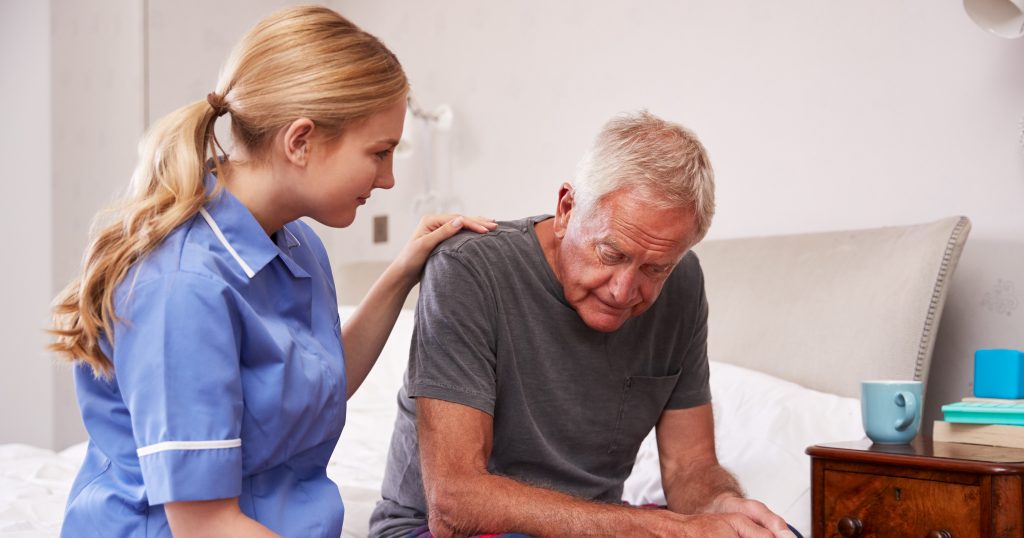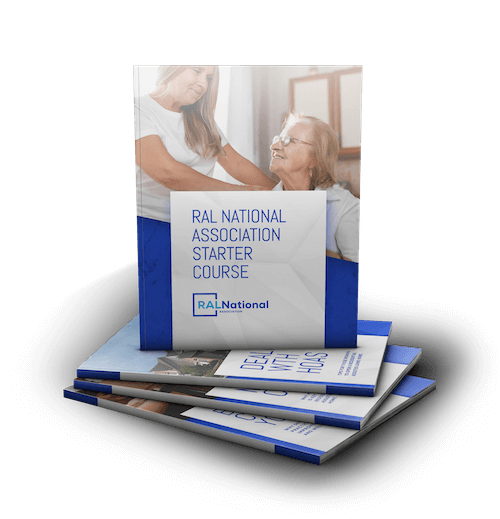Did you know that some people actually experience depression depending on what season it is?
It’s called Seasonal Depression, and it also affects seniors in residential assisted living homes. The winter months cause the most struggle for these individuals. The cold weather and gray skies create an effect called the winter blues. This concept of winter blues is oftentimes undiagnosed Season Affective Disorder (SAD). However, there are some unique ways to prevent Seasonal Depression and this article will help caregivers provide support throughout the process. It is important to pay extra close attention to seniors during the challenging winter months. SAD is a major depressive disorder that should be taken seriously. Caregivers should be mindful that it often affects seniors who previously spent a lot of time outdoors but now find themselves primarily indoors. Residential assisted living homes combined with severe weather reduces mobility and can increase illness. This article is a roadmap to navigating through:
- Seasonal affective disorder
- Nine common symptoms
- How it affects seniors and caregivers
- When to see a doctor
- Four ways to prevent and manage symptoms
WHAT IS SEASONAL AFFECTIVE DISORDER (SAD)?
Seasonal Affective Disorder (SAD), also called seasonal depression, is believed to be brought on by the earlier sunsets and colder weather of winter. The rising and setting of the sun influence the body’s natural circadian rhythm. According to the scientists, less sun exposure during shorter winter seasons shifts brain chemistry. Biochemical changes, like reduced serotonin and melatonin levels, may cause symptoms of depression – this is SAD. The condition typically begins toward the end of the autumn or early winter and goes away in the spring and summer. Sunshine is usually the best cure. But, we should keep in mind that too much sun exposure can cause heat exhaustion, especially to children and seniors, so it is important to limit their exposure to direct sunlight, stay hydrated and ensure that they will have a cool place to stay, by hiring an expert in air conditioning repair to perform preventive maintenance before the summer season starts.
NINE SYMPTOMS OF SEASONAL AFFECTIVE DISORDER
The symptoms of this condition start off mild and become more severe as winter progresses. When seniors experience SAD, their symptoms are amplified even worse than younger people who suffer the same condition:
Elderly people living with memory loss can continue maintaining healthy lifestyles by obtaining quality care in a safe environment. Trained residential assisted living staff can help seniors take steps to slow the process. All shrinkage is not dementia related. Seniors can tackle the disease by getting connected to RAL homes that have a better understanding of the root causes.
- Becoming anti-social, wanting to be alone
- Loss of interest in once-loved activities
- Irritability and agitation
- Trouble concentrating
- Increase in appetite or weight gain
- Frequently thoughts of death or suicide
- Lack of energy, feeling sluggish
- Increased need for sleep and/or problems with sleep
- Feelings of worthlessness or hopelessness
THE EFFECT OF SAD ON SENIORS AND CAREGIVERS
Awareness and recognition of SAD warning signs can support caregivers and seniors in their efforts to help prevent depression. Warning signs give people the opportunity to improve their quality of life as much as possible. Unfortunately, many caregivers experience symptoms of depression, as a result of chronic stress. This stress intensifies when seasonal depression kicks in. Likewise, when elderly people suffer from serious health conditions they are usually accompanied by symptoms of depression.
WHEN DO DOCTORS NEED TO GET INVOLVED?
Experiencing random days when you feel down, drained and even depressed is normal for all people of all backgrounds. When you are feeling down for days, unmotivated, and discouraged without the ability to discover enjoyment in activities is when you should look to seek help. If your sleep patterns and appetite are altered, you feel hopeless, or contemplate harming yourself, seeking medical attention from a doctor is critical. There are ways to prevent depression from destroying your life.
FOUR WAYS TO PREVENT AND MANAGE SAD
1. Recognize the Risk
[/v]Awareness about SAD empowers individuals to be more proactive about identifying symptoms early on. It’s important to note that SAD is more common in women than men. Know your family history. People with clinical depression in their family profile are more likely to experience seasonal depression. These are examples of increased risks. People with SAD are often known to have low levels of vitamin D. This is because vitamin D plays an important part in regulating serotonin levels.
2. Gain More Exposure to Light
Getting exposure to light is probably one of the most important steps to take toward preventing and managing SAD. Increased natural light exposure can happen in a variety of different ways:
- Keep window coverings and blinds open for sunlight to come in,
- Spend more quality time in the brightest area of the home,
- Take walks or sit on the back porch for added sunlight
Light therapy is another effective way to increase light exposure without having to go outdoors. There are light therapy lamps that people can use in their homes. These lamps can reduce SAD symptoms when used appropriately. Prior to implementing light therapy into your daily routine, check with a doctor, because this therapy can cause other conditions in certain people.
3. Implement Routine Exercise
Various forms of physical activity, to include routine exercise reduce stress and anxiety. As a result, it aids in the reduction of SAD symptoms. In fact, regularly exercising helps the entire body and improves sleep. Caregivers often find it difficult to incorporate exercise into their schedules. Trying yoga, squats, lunges and other easy-to-do exercises that can be employed anytime, anywhere can help. It doesn’t have to be intense or major, any repetitive movement counts.
4. Get Help
Talk to a doctor if you are concerned that you or a resident may have seasonal depression, they’ll be able to properly diagnose you. Lifestyle changes are usually the best way to manage or prevent SAD, these may include group therapy, medication management, or counseling.
RALNA OFFERS A DIFFERENT KIND OF HELP
The Residential Assisted Living National Association provides a wide range of information to help owners and operators of RAL homes advance their businesses. With trending blog topics, legal connections, discounted products, unique services, marketing resources, and so much more, RALNA is major support for industry leaders. Visit www.RALNA.org for additional information on providing quality care for seniors across the country. Blend your voice with ours to redefine the landscape of the residential assisted living industry. It is the nation’s only industry association providing resources, education, and support to RAL homeowners and operators. Did you know that some people actually experience depression depending on what season it is?
If you found the information on this article valuable, you’ll find enormous benefits by becoming a member of our community. Visit this page to become a RALNA Member.











